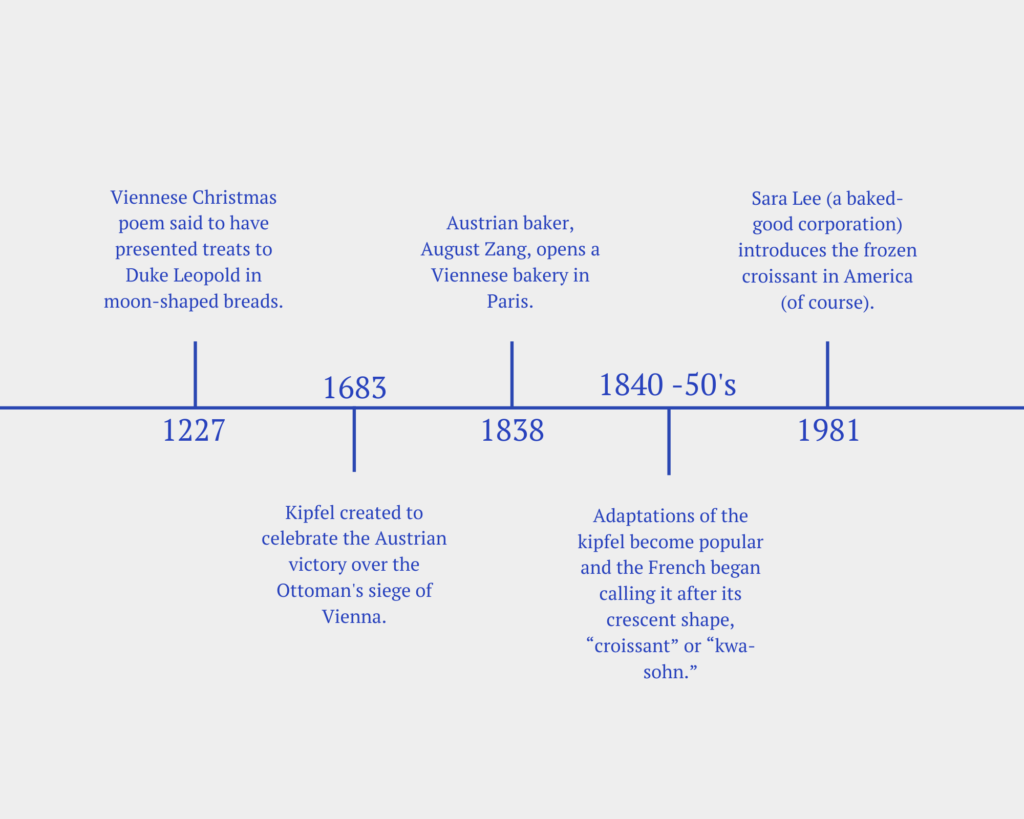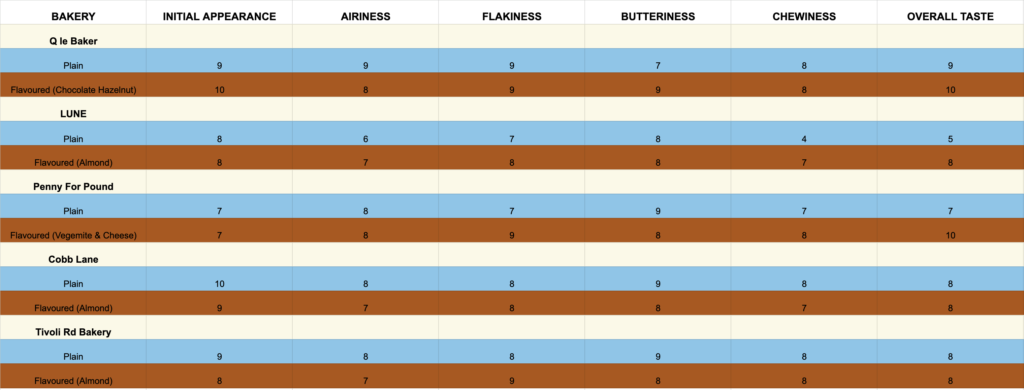From Dough To Divine: A Close-Up on the Croissant
An alluring, buttery, and glorious love affair between one American and the crescent-shaped pastry we all think we know and love.
Consequent to moving to Melbourne, I made it my mission to find the best croissant. I really had no idea what I was getting myself into, but it rapidly turned into a defining theme during my time here, and an expensive one at that (Girl maths does, however, prove that each croissant I buy and eat is free, written off like taxes, but emotionally).
My relationship with the croissant is rather untraditional. I take my job as a croissant eater very seriously and scientifically. And, as an international student, I feel I can give unbiased accounts of the crescent pastry in this city.
For context, I have a background in STEM having studied Cognitive Science in my undergrad. So curating a detailed methodology for a city-wide hunt for the best croissant came naturally to me. Now, you may not agree with my standards or processes, so by all means, create your own experiment. Who am I to stifle culinary and scientific discovery?!
My (Extremely) Scientific Methodology is as follows:
I have created the following six categories in my search for the greatest croissant in Melbourne:
Initial Appearance | Airiness | Flakiness | Butteriness | Taste | Chewiness
My ideal croissant is aesthetic. Yes, it needs to be pretty to look at (otherwise, what’s the point? JK JK!) But actually, first impressions are extremely important. How dark or light is it? Is it flat or fluffed? The general shape is a little more subject to its case, but how crescent-shaped is it? Then, at first bite, it must be airy and light, with the outside crust being firm and crispy, medium flakey, and very buttery. If you can’t taste the butter and a few crumbs don’t fly, it’s not right. The overall taste is ever so slightly sweet but, of course, there’s always room for flavour to be taken into either savoury or sweet directions. And chewiness, along with it being light, the dough needs to be tender enough to bite but must simultaneously feel like it’s melting in your mouth (probably the butter’s role in all this).
Oh, and don’t think I forgot about having a control and experimental group. I sampled both a plain croissant as well as a flavoured one (hence why this became so expensive, but written off on behalf of my mental well-being).

Now before I dive into a few of my experiential findings, it may be of interest to you to know the history of the croissant.
Here’s something that will burst your bubble and remind you that life is a lie: The iconic French pastry is actually not originally French. It’s Viennese. As in, it originated in Vienna, Austria. So I guess you could also say it’s Austrian.
Before the croissant came to its modern form, it was called the kipfel. Of course, over time, the pastry evolved and took on the now quintessential form we eat today.
Here’s the general timeline of kipfel => croissant:
1227 – Viennese Christmas treated presented to Duke Leopold in moon-shaped breads.
1683 – Kipfel created to celebrate the Austrian victory over the Ottoman’s siege of Vienna.
1838 – Austrian baker August Zang opens a Viennese bakery in Paris.
1840-50s – Adaptations of the kipfel become popular and the French began calling it after its crescent shape, “croissant” or “kwa-sohn.”
1981 – Sara Lee (a baked-good corporation) introduces the frozen croissant in America (of course).

Timeline of the croissant. Dates Retrieved from Smithsonian Magazine. Timeline created by Ilana Cohen.
Upon embarking on this journey, I did my research (because I am a woman of science). However, don’t just take my word for what constitutes a good croissant .
After educating myself on its history, I set out to understand what makes a croissant “good,” nay “great.” I had the pleasure of getting behind the scenes at Cobb Lane, a trinity of small and delightful bakeries in Melbourne (three locations: Yarraville – their capital – South Melbourne Market and Richmond), and learning the step-by-step process of how the croissants go from dough to divine.
According to baker, Dayle, of Cobb Lane, the marks of a perfect croissant are the crispiness and the “appropriate lamination between the dough and the butter in order to get that proper steam and texture.” In layman’s terms, that means you want a lot of layers of rolled dough in between the layers of butter so that when it bakes there are enough spaces for steam to pass and create the perfect, mouth-watering bite.
While I felt a little intrusive ogling in the back kitchen, I was more fascinated by the sights, smells, and sounds to really care (like, I was allowed to be there).
I watched as the patissier took a tray of perfectly golden and slightly glossy fresh-baked goods from the oven and, even over the clanking of trays and oven doors, I swear I heard my stomach growl like a half-starved, mostly-rabid, no-longer hibernating brown bear.
Oh yeah. This is science. Here’s the data.
First, a disclaimer. I purposely left cost out of the ratings as I was so eager to try so many croissants. However, I will let you in on a little secret: just because a croissant is exorbitantly priced, doesn’t mean it’s the best.
To save you the sake of having to do all the maths, here are the final results. I added all the scores from each category on a scale of 1-10. Meaning 60 is the highest possible score a croissant can get.
Brace yourselves.

Raw Data Scoring of Croissants. Chart created by Ilana Cohen.

Average Score of Plain vs. Flavoured Croissants. Graph created by Ilana Cohen.
Of the five we tested, Q le Baker in South Yarra came out on top for both its flavoured and plain croissants. Penny for Pound took out the silver with Cobb Lane and Tivoli Bakery the bronze.
Lune came last. Yep. Lune. Long the doyenne of Melbourne’s croissant-craved hipsters. Lune.
Hand on heart, I only tested five. Sling me pastry money and I’ll expand my research. For science.
So all this is to say that while the croissant underwent quite the transformation throughout history, its divinity has withstood the test of time. Again, these are just a small handful of bakeries around Melbourne, and I intend to eat my way through the city, one flakey, delectable croissant at a time (well, actually two, but you get the point).
But don’t just take my word for it. Prove me wrong (or right). Gorge yourselves on flaky buttery pastry goodness. Drown me with your data.
For science.
🥐

